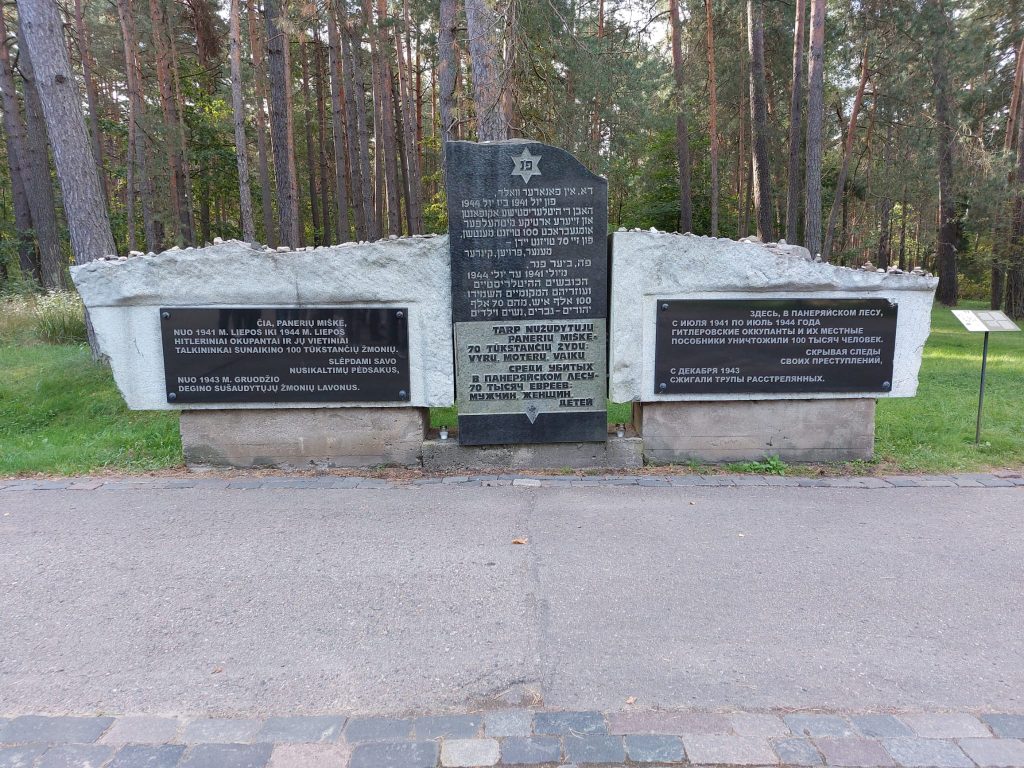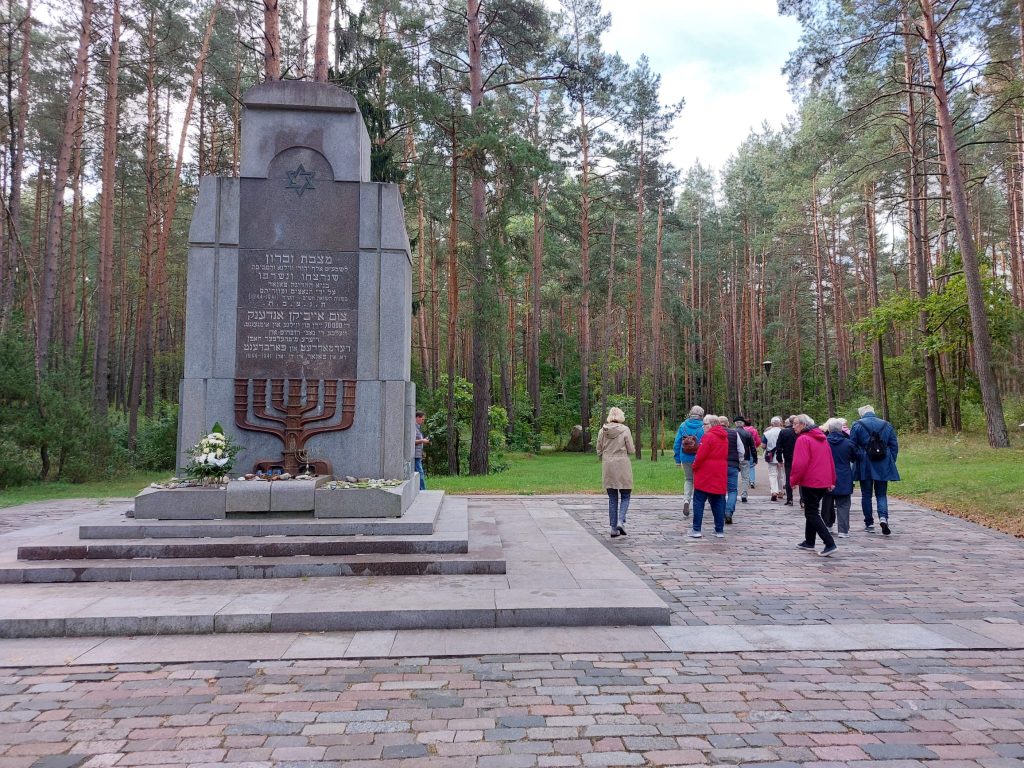Participants of the trip of the twinning association on the return journey
Rheine/Trakai. After the celebrations of the 700th anniversary of the twin town of Trakai, the fifth day of the citizens’ trip was spent at the Poneriai Memorial on the outskirts of Vilnius.

It is not the village of Poneriai itself, but the grove on its outskirts that has become the memorial site for an entire area of mass extermination. There, in 1940/41, the Soviet administration had dug pits for an oil tank farm (not completed after the German invasion ). The German occupation forces and their Lithuanian collaborators used this site for mass executions for three years: 100,000 men, women, youth and children were murdered there between July 1941 and July 1944 – about 70,000 Jews, 20,000 Poles, 10,000 Soviet prisoners of war and an unknown number of Roma and non-Jewish Lithuanians. The found pits served as mass graves.

The afternoon was free for the participants of the trip. The majority of the group visited the Orthodox Church in Vilnius and the local museum. This was built a few years ago on the foundations of the old palace. Remains of this foundation have been incorporated into the museum.

The Palace of the Grand Princes in Vilnius was the political, diplomatic, administrative and cultural center of the Grand Duchy of Lithuania in the 15th and 16th centuries and in the first half of the 17th century.
At the beginning of the 19th century, on the initiative of the tsarist Russian government, the residence of the Lithuanian Grand Princes was destroyed and rebuilt only in 2013.
In 2000, the Lithuanian Parliament passed a law on reconstruction and use of the Palace of the Grand Dukes. In 2013, two of the four wings of the palace were opened to visitors. The Lithuanian National Museum has been located there since 2009.

The director of the museum, Prof. Dr. Vydas Dolinskas and his colleague Prof. Dr. Jurate Sentvaitiene did not miss the opportunity to personally guide visitors through the exhibition.
For Jurate Sentvaitiene Rheine is not unknown. In 1994 she organized and supervised the amber exhibition in the Emsstadt.